Daphne Mayo (1895-1982) was a superlative Australian sculptor and artist from Brisbane. Her notable works include the Tympanium for the Brisbane City Hall; the East Bronze Doors, the Public Library of New South Wales; and the Queensland Women’s War Memorial, as well as numerous small sculptures and public works.
In this post, we delve into photographs from the Daphne Mayo Collection that give you a behind-the-scenes look at Daphne’s creative process. Her studios, both in Australia and abroad, were interesting spaces, full of works-in-progress. The images in this post are digitised photographs and negatives (glass plate and silver gelatin negatives) and are artworks in themselves.
Daphne's studios
Brisbane Central Technical College
In the early twentieth century, it was rare for a female to become a sculptor or attend a technical college. Daphne’s parents valued education and encouraged her to master her skills to draw and sculpt. This brought her to college and her ‘first studio’.
In 1911, at the age of 16, Daphne entered Brisbane Central Technical College specialising in modelling. She was under the strict tuition of Godfrey Rivers, and LJ Harvey. Both teachers strongly encouraged the determined young student, allowing her to use the modelling studio after hours. Daphne’s early works represented the classical style in which she was taught.
While at college she created a copy of one of the most celebrated sculptures held in the Lourve, the Winged Victory of Samothrace by Pythokritos, c190BC. The sculpture depicts the (headless and armless) goddess, Nike. Her version of the sculpture won her the Queensland Wattle Day Leagues’ travelling art scholarship training in Europe.
Daphne was awarded a Diploma in Art Craftsmanship in 1914.
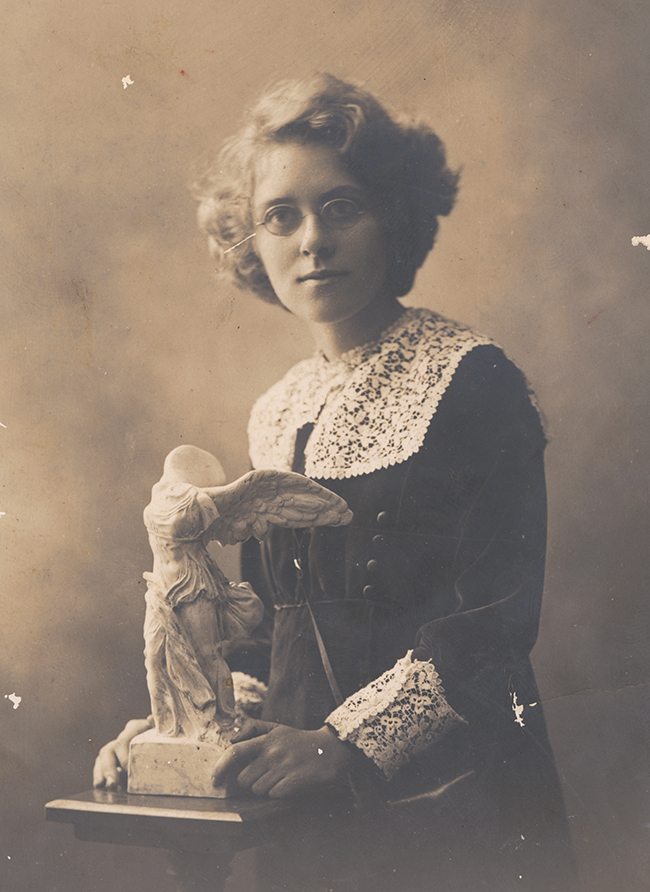
Royal Academy Sculpture School, London
Daphne delayed her scholarship until after the First World War. In 1919, she sailed to England. In late 1920, she began her scholarship at the Royal Academy Sculpture School.
Images from the collection show Daphne in these studios sculpting from live models. She excelled here and won various awards and medals at the academy.
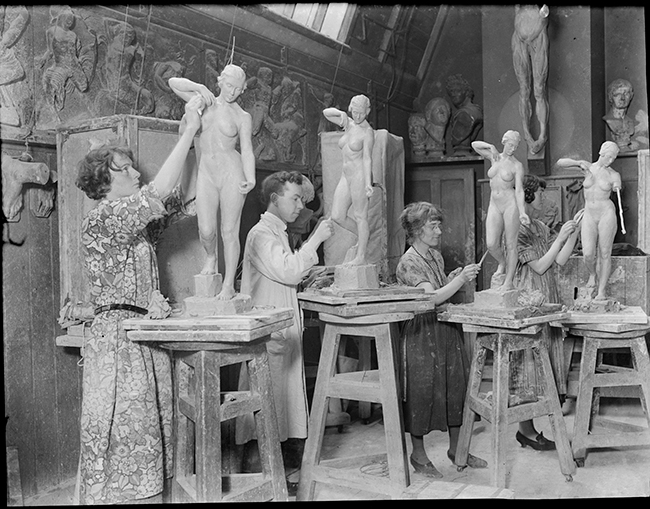
Upon her graduation in 1923, Daphne won the academy’s highest award – the gold medal for her sculpture of The return of the prodigal son. This was the first time a woman had won this prize.
The sculpture, made in plaster, depicts a half-life sized seated and kneeling figure embracing. Australian landscape painter, Lloyd Rees, modelled for the kneeling figure of the son.
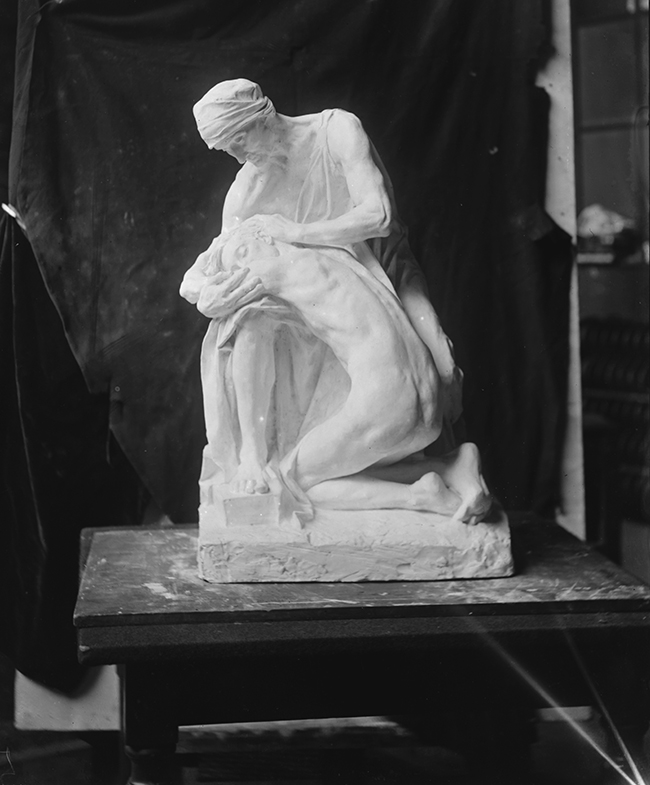
Brisbane City Hall rooftop studio
Daphne returned to Australia in 1925 and began a series of public commissioned works.
In 1927, she was commissioned to create the tympanum (a decorative triangular feature over the entrance of a building) for Brisbane City Hall and she moved into the rooftop studio at Brisbane City Hall in 1928 to begin work.
Daphne created a third-scale clay model of the proposed work. She asked her friends to model for some of the figures featured in her design including poet Edith Lahey, painter Vida Lahey, her neighbour Cecil Bartlett, and local Brisbane boxer Billy Chapman.
In this studio, Daphne often started work early and was forced to leave during the heat of the day. She would return after 4pm and work late. In a letter Daphne recounted to a friend that she would sneak down after the night watchman made his rounds to watch the organ being assembled.
The Tympanum was officially opened in 1930.

Gladstone Road Highgate Hill, Brisbane
After her commission at Brisbane City Hall, Daphne moved into her own cottage at 147 Gladstone Road, Highgate Hill and moved her studio with her. Part of the house became her studio which she shared with fellow artist and her aunt by marriage, Vida Lahey.
She kept this studio until 1973 when she retired from public life. She created many of her works there surrounded by inspirational gardens.
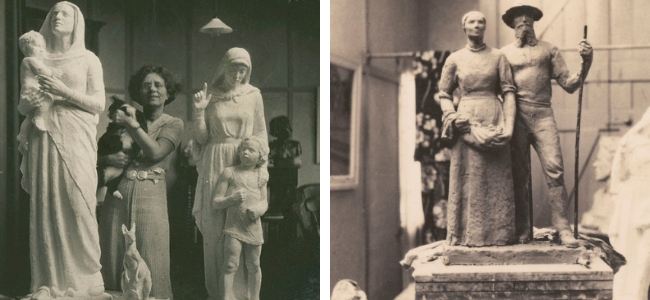
Chelsea studio, London
In 1938, Daphne toured Europe and the United Kingdom and in 1939 set up a studio in Chelsea in London. However, she was forced to close her studio and return to Australia with the outbreak of the Second World War. The studio building was bombed soon after.
The Sydney studio
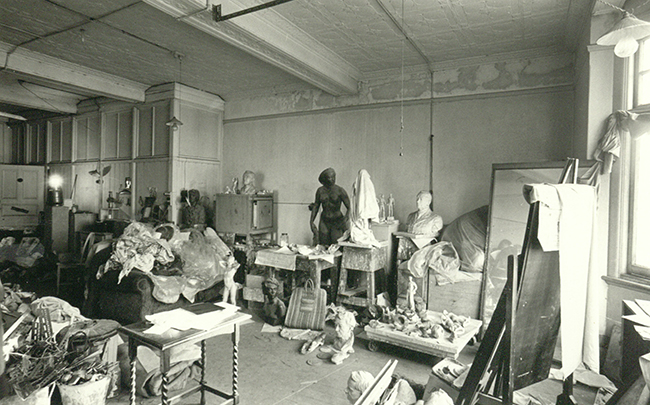
In April 1940, Daphne moved to Sydney and opened her own studio at 231 George Street in the bustling heart of Sydney. The Telegraph described the studio as:
Miss Mayo’s studio is most spacious with pale grey walls, gaily printed linen curtains a couple of flower studies by Vida Lahey, and off-white furniture.
Here she embarked on another major commision for the East Bronze Doors of the Public Library of New South Wales, Sydney. However, she also began to experiment with smaller and modernist works and ceramics.
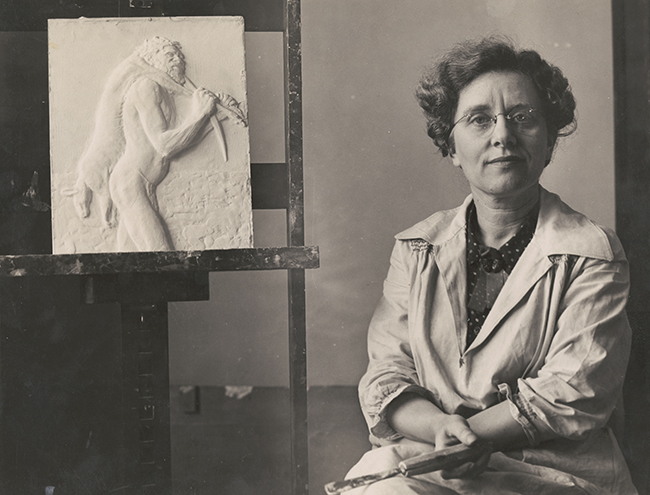
Her modernist sculptures followed the sleek lines of modern style compared to her ornate and detailed classical works.
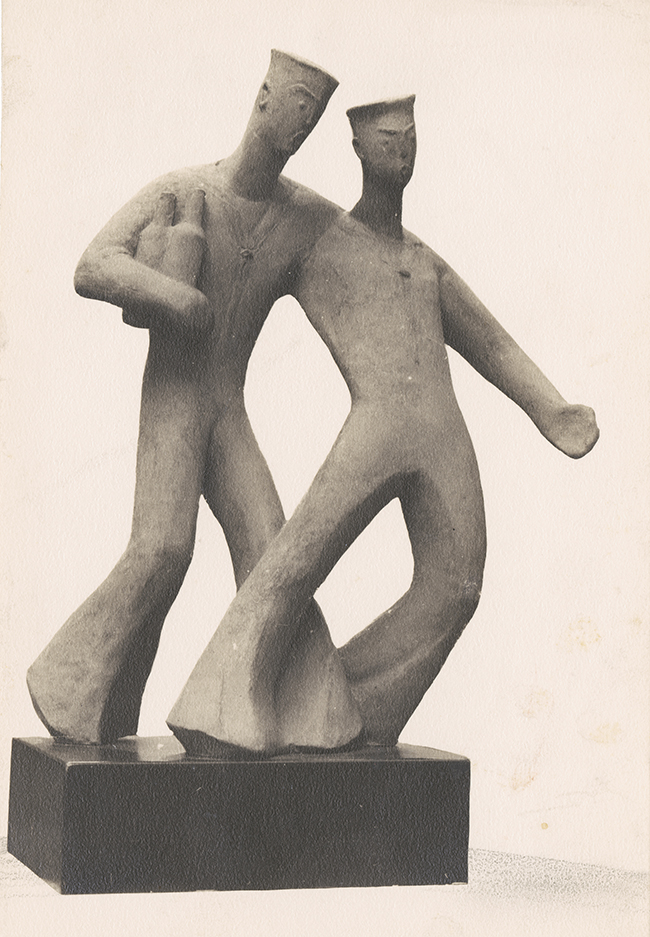
Daphne returned to Brisbane in 1961, though retained her Sydney studio and made visits to Sydney until the early 1970s. In 1969, Customs Police raided her Sydney studio. It was a case of administrative error because they had the wrong address for the raid. After reporting the incident in a newspaper editorial, Daphne received a public apology from the Federal Minister for Customs.
In 1981, Sydney Cove Development reclaimed the building in George Street. With Daphne in a nursing home, the Queensland Trustees Ltd, directed by Judith Mackay, dissembled and sorted the Sydney studio.
The contents of her studio was dispersed among the Queensland Art Gallery, The University of Queensland Art Museum and Fryer Library.
Judith Mackay documented the process in two albums, which include photographs taken by Jacqueline Macnaughtan and Tim Collis-Bird. These albums have been digitised and are available on UQ eSpace.
Explore the Daphne Mayo Collection in UQ eSpace
The Daphne Mayo collection, held by the Fryer Library, includes a range of items including her papers, correspondence, art exhibition catalogues, tools, artworks, notebooks, diaries and photographs.
Visit UQ eSpace to enjoy a selection of digitised photographs and negatives (glass plate, silver gelatin, and chromogenic colour negatives) from the Daphne Mayo Collection.
Tell us what you think
Did you enjoy the opportunity to look behind the scenes of a talented and creative Australian artist? Visit UQ eSpace to look at all the images in this collection and tell us what you think of the story on Facebook or Twitter.
References
- McKay, J. (1981). Daphne Mayo, sculptor (Master's thesis, Power Institute of Fine Arts, University of Sydney). Retrieved from https://espace.library.uq.edu.au/view/UQ:368009
- McKay, J., & Hawker, M. (2011). Daphne Mayo: Let there be sculpture. Brisbane: Queensland Art Gallery / Gallery of Modern Art
- Mayo, D., & University of Queensland. University Art Museum. (1981). Daphne Mayo, sculptor. Brisbane: University Art Museum, University of Queensland
- Queensland Sculptor's Panels for Library Doors (1940, November 28). The Telegraph (Brisbane, Qld. : 1872 - 1947), p. 11 (CITY FINAL LAST MINUTE NEWS). Retrieved April 27, 2018, from http://nla.gov.au/nla.news-article184537625
This story is part of our 2018-2019 Summer Series of blog posts. The posts are full of interesting stories and images from our cultural and heritage collections. We encourage you, dear reader, to indulge.